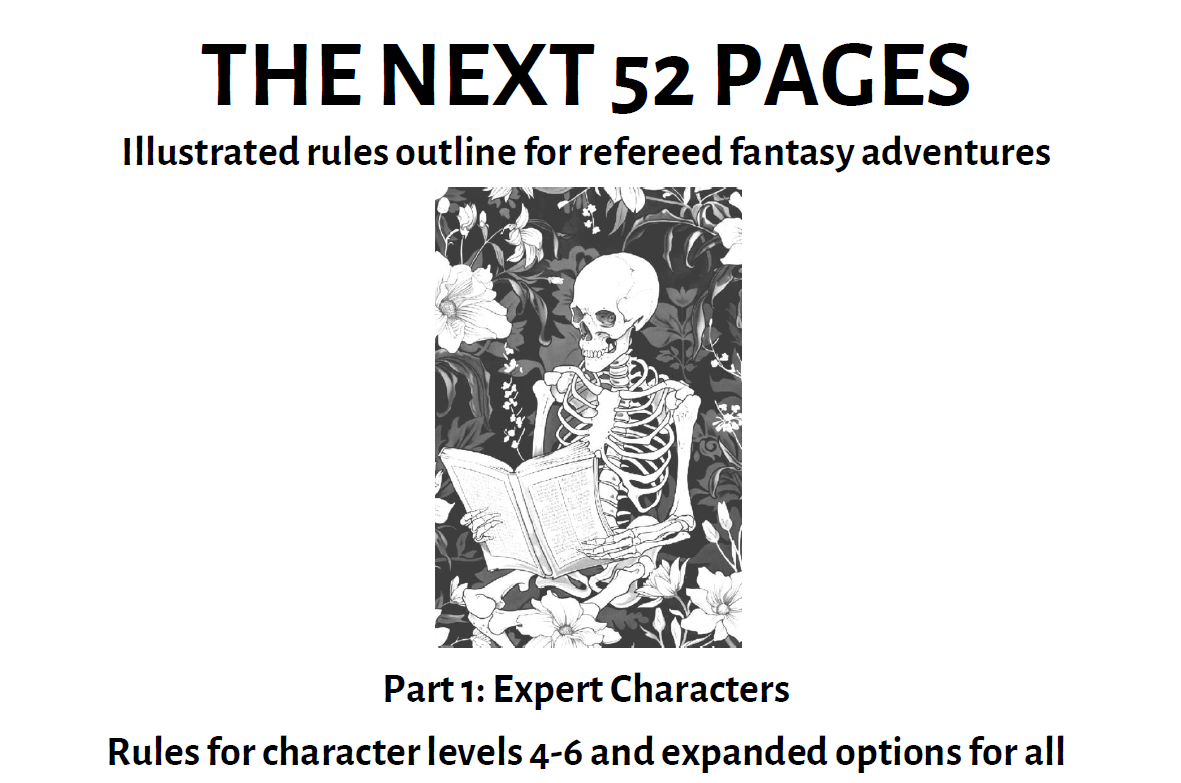Back in the early days of the Old School Revival, Delta's D&D Hotspot was a place to go for thoughtful design and scholarship, firmly rooted in the classic games and free of the edgy or curmudgeonly posing indulged elsewhere. Like many of that blogging generation, Delta (Daniel R. Collins) has put out books of his house rules, modifications and expansions of Original D&D, all in a familiar trade dress. One of these, revised in 2021, is a set of rules for miniatures battles in D&D campaigns, called Book of War.

OD&D itself had a mass combat supplement: Swords & Spells, authored by Gary Gygax in 1976, but little noticed by revivalists today. Still, its features clearly influenced the more widely known and promoted Battlesystem, and also Delta's battle rules for OD&D. All three share a 10 soldiers:1 figure scale with provision for lone heroes and leaders. All three, in different ways, scale unit stats to D&D individual stats. Command, movement, and morale, though handled in slightly different ways, follow a common model that was also not far from standard rules for formed historical battles. We can also see a preview of AD&D in the percentile morale approach and weapon-to-armor modifiying tables.

Delta's foreword briefly mentions Swords & Spells as "based firmly on D&D, but frankly not fun to play." Indeed, S&S damage is dealt out completely deterministically. Dice only figure into the deeds of individuals (played out using D&D rules) and the morale of units. There is an option to add random damage, but as a clunky percentage modifier to casualties, which layers onto an equally inelegant appendix handling differences in troop and weapon quality. For in true old-style grognard fashion, S&S also depends enormously on double-digit calculations: dealing out casualties according to a combat table similar to Battlesystem's, in modifying said casualties, and adding up the myriad of modifiers for percentile morale checks.
Book of War is also meant to be compatible with OD&D. But it goes the opposite way, abandoning calculations and tables in favour of a feature taken from the most successful wargame rules sets of all time: rolling huge handfuls of dice against a defender's set number, and scoring the hits as Hit Dice of figure casualties. Some granularity is lost in scaling down the d20-based stats to d6: armor class and hit bonuses improve only by groups of 3. So the work of calculation and lookups go into creating the unit stats in the first place. Those stats then, although superficially different from their D&D originals, dispense with the need to use a table in play.
Book of War's innovations, by the way, resemble Battlesystem's 2nd edition improvements, which merged THAC0 and damage die into an attack rating which then scored hits against the defender using dice of different sizes. Both revisions realize that there's something primal and satisfying about throwing lots of dice and seeing the results right there.
Otherwise, Book of War is geared toward simplicity of use. There are none of the detailed formation or commander rules you see in Battlesystem or S&S. Morale is based on pass-or-rout checks, with only a few modifiers. Apart from some long division when figuring out casualty rates for morale checks, there is little math beyond what's necessary. This simplicity, however, works against the rules' ability to scale effectively and simulate any but the grossest differences in equipment and quality between troops. A goblin fights just as well as a dwarf here. Morale differences are handled only very broadly, as a function of Hit Dice and troop alignment. As a PC commander you may want to drain your treasure chest buying shields, training, or improved weapons for your troops. But these upgrades will likely not register in play.
Book of War, then, meets all the desirables we have listed in a D&D mass combat system: scaleability, bounded chance, PC participation, emergent properties (mostly morale), and incrementality. The rule set is also relatively elegant and easy to use. But because of the way this affects scaling, it is best for battles that happen as a backdrop to the action. DMs whose players are in a position to equip and train their own armies may want to look at using a more fine-grained system.



